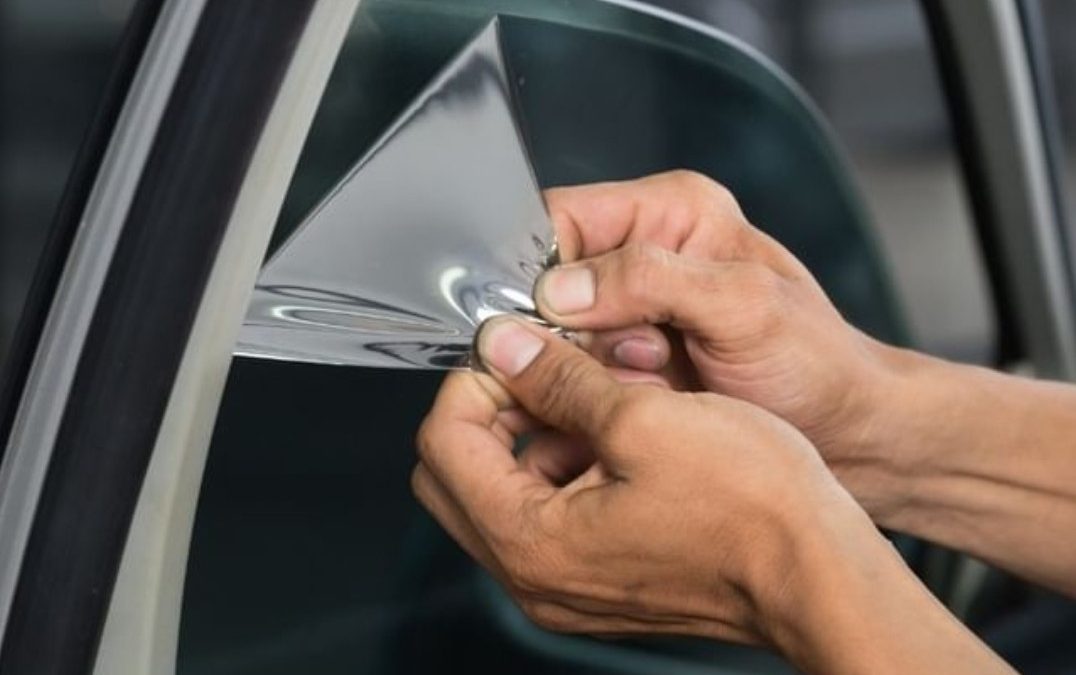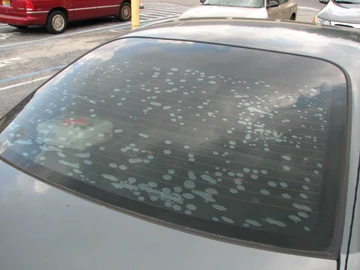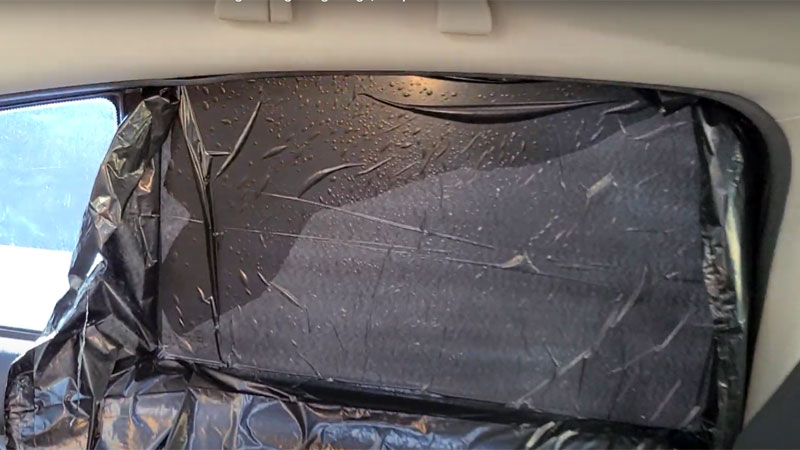What is Window Tint
Window tint is a thin film applied to the glass surface of a vehicle or building’s windows. Its primary purpose is to reduce sunlight and control temperature, making it an essential feature for many people.
Window tint can offer numerous benefits, ranging from personal comfort to improved privacy and even energy efficiency. By reducing the amount of sunlight that enters through the windows, it can help keep the interior cooler and more comfortable, especially during hot summer days. This can be particularly beneficial for vehicles, as it allows for a more enjoyable driving experience.
In addition to temperature control, window tint can also help reduce glare, making it easier to see clearly while driving or working inside a building. It can also provide privacy by making it more difficult for people to see inside the vehicle or building. This added level of privacy can be particularly beneficial in urban environments and for those who value their personal space.
Overall, window tint is a practical and valuable addition that can bring both comfort and convenience. Whether it’s for a vehicle or home, the ability to control temperature, reduce glare, and improve privacy make window tint a popular choice among many.
For those embarking on the best DIY car window tint projects, understanding how to remove old tint from car windows is essential. When it’s time to tackle how to get window tint off, especially when faced with the challenge of white film on tinted windows, the right approach is key. If you’re figuring out how to remove tint film from car windows, using a steamer or heat gun can effectively loosen the adhesive, simplifying the peeling process. For those puzzled about how to remove window film adhesive from glass, a blend of soapy water and a razor blade can gently scrape away any remaining adhesive without harming the glass. This method ensures a clean and damage-free removal of the tint, maintaining the pristine condition of your car windows.
Why does window tint fail
Window tint can provide many benefits, but over time, it may start to fail and lose its effectiveness. Several factors can contribute to window tint failure, ranging from poor installation to the natural aging process. One common reason for window tint failure is the use of low-quality tint films or improper installation techniques. When cheap or subpar films are used, they may not adhere properly to the window glass or may be prone to bubbling, peeling, cracking, or fading. Incorrect installation techniques, such as inadequate cleaning of the window surface or not allowing enough time for the tint to cure, can also lead to failure. Additionally, exposure to extreme weather conditions, prolonged sunlight, and harsh cleaning chemicals can contribute to the deterioration of window tint. As a result, failed window tint may exhibit signs such as bubbling, cracking, peeling, fading, or even turning a purple hue. To avoid these issues, it is essential to choose high-quality tint films and have them professionally installed to ensure long-lasting performance and durability. Regular maintenance, such as using gentle cleaning solutions and avoiding harsh chemicals, can also help prolong the life of the window tint.
What are the effects of damaged or old window tint
Old or damaged window tint can have several negative effects on both the appearance and functionality of your car’s windows. One of the most noticeable effects is reduced visibility. Over time, window tint can fade or become discolored, making it difficult to see clearly through the glass. This can pose a safety hazard, especially when driving at night or in adverse weather conditions.
Another common issue with damaged or old window tint is bubbling or peeling. As the adhesive on the film breaks down or becomes damaged, the tint can start to bubble or peel away from the window glass. This not only looks unsightly but also affects the overall effectiveness of the tint in blocking out the sun’s harmful UV rays.
Speaking of UV rays, damaged window tint may provide less protection against these rays. UV rays not only contribute to the aging of your vehicle’s interior but also pose a risk to your health. Quality window tints are designed to block out a significant amount of UV radiation, but as the tint deteriorates, its effectiveness diminishes.
In addition to these effects, damaged or old window tint can also lead to increased glare from the sun and reduced privacy. If the film is peeling or bubbling, it allows more sunlight to enter the vehicle, causing glare that can be distracting and dangerous. Moreover, with diminished tint coverage, your privacy within the car may be compromised.
Considering these effects, it’s essential to regularly inspect your window tint for any signs of damage or wear. If you notice poor visibility, bubbling, peeling, or reduced effectiveness in blocking UV rays, it may be time to consider removing and replacing the old tint.
3 Methods to remove window tint
When it comes to removing window tint, there are several methods you can try to effectively and safely remove the old or damaged film from your car’s windows. Whether you prefer a heat method, a steamer method, or a soapy solution, there’s a method that will work best for you. In this article, we will explore three effective methods to remove window tint and provide step-by-step instructions for each method. With these methods, you can say goodbye to bubbling or peeling tint, and restore your vehicle’s windows to their original clarity and functionality.
Method 1 – Scrape off with a blade
Method 1: Scrape off with a Blade
Removing window tint can be a straightforward process when using the right methods. One effective way is to scrape off the tint film and adhesive residue with a blade. This method is particularly useful during warmer weather when the adhesive naturally loosens.
To begin, gather the necessary tools: a sharp razor blade, soapy water or a window cleaner solution, a spray bottle, and a microfiber cloth. Start by spraying the soapy water or cleaner solution onto the window tint, ensuring that the entire surface is covered. Allow the solution to sit for a few minutes, which helps to soften the adhesive.
Next, take the razor blade and carefully scrape off the tint film from one corner of the window. Be cautious not to press too hard to avoid scratching the glass. Gradually work your way across the window, using a combination of short vertical and horizontal movements. Take breaks as needed to spray additional soapy water or cleaner solution and make sure the surface remains wet.
After removing the tint film, you may notice some residue left behind. Use the razor blade to gently scrape off the remaining adhesive. Be patient and take your time to avoid damaging the window. Once all the residue is scraped off, wipe the window clean with a microfiber cloth.
Remember to prioritise your safety by wearing safety glasses and using caution when handling sharp blades. This method is a reliable and cost-effective way to remove window tint, particularly during warmer weather when the adhesive is easier to remove.
Method 1 – Pros and Cons
Method 1: Pros and Cons of Scrape Off Window Tint with a Razor Blade
Scraping off window tint with a razor blade is a popular method for removing window tint and adhesive residue. However, it does come with its own set of pros and cons.
Pros:
1. Cost-effective: This method requires minimal tools, making it a budget-friendly option for those looking to remove window tint themselves.
2. Easy to find tools: Razor blades are readily available at hardware stores and are easy to use for scraping off the tint film and adhesive residue.
3. Effective on small areas: This method is particularly useful for smaller windows where adhesive residue is concentrated, enabling precise removal.
Cons:
1. Risk of glass damage: While using a razor blade, there is a potential risk of scratching or damaging the window glass if not used carefully. Apply gentle pressure and avoid using excessive force.
2. Time-consuming: Scraping off tint film and adhesive residue can be a time-consuming process, especially when dealing with large windows or extensive residue.
3. Difficulty with rear windows: Rear windows, especially those with defroster grid lines, require extra caution to avoid damaging the delicate lines.
While scraping off window tint with a razor blade can be an effective method, it is important to be cautious and patient throughout the process. Take care to avoid scratching the glass and consider the time investment required.
Method 2 – Steam and Patience
One highly effective method for removing car window tint is by using a steamer and exercising patience. This method works well in all weather conditions, especially cold ones, as the heat from the steamer helps soften the glue and makes the tint material less brittle.
To begin, gather the necessary materials, including a steamer, a non-metallic scraper, adhesive remover, a soft scourer, and a plastic sheeting. Fill the steamer with water and allow it to heat up. Once hot, hold the steamer approximately six inches away from the window tint and start steaming the surface. Move the steamer in a back-and-forth motion, focusing on one section at a time.
As the steam penetrates the tint, the glue will start to loosen. Be patient and allow the steam to work its magic, making the tint gradually peel away from the window. Use the non-metallic scraper to gently lift the corners and edges of the tint. Avoid using excessive force to prevent any damage to the window glass.
Once the tint has been completely removed, there may be some adhesive residue left behind. Use a soft scourer and adhesive remover to scrub away the remaining glue. Take caution not to scratch the window glass.
By using the steamer method and exercising patience, you can effectively remove car window tint without causing any damage to the window glass. Remember to always wear safety glasses and take your time to achieve the best results.
Method 2 – Pros and Cons
Method 2: Pros and Cons of Removing Car Window Tint
When it comes to removing car window tint, there are several methods you can choose from. One popular option is Method 2, which involves using a steamer. Here are the pros and cons of this method:
Pros:
1. Effective: Using a steamer to remove window tint can be highly effective, especially when dealing with newer tints that have not been exposed to extreme heat or sun damage. The steam helps to soften the adhesive, making it easier to peel off the tint film.
2. Simplicity: Compared to other methods, using a steamer is relatively straightforward. Just steam the area, peel off the tint film, and use a non-metallic scraper to remove any remaining residue.
Cons:
1. Leftover Glue: While steaming can help remove the tint film, it may not completely eliminate the adhesive residue left behind. This residue can be stubborn to remove and may require additional steps or products to fully clean the window.
2. Ineffectiveness for Very Old Tint: Method 2 is not as effective when it comes to removing very old and weathered window tint. The adhesive may have become extremely difficult to remove, and other methods, such as heat guns, razor blades, or chemical solutions, may be more suitable.
3. Expense: Investing in a quality steamer can be costly. While it can be a worthwhile long-term investment for professionals or frequent tint removal tasks, it may not be practical for occasional users.
4. Risks to Electrical Components: When using a steamer, there is a risk of water penetrating the door cards and causing damage to electrical components such as window switches or speakers. It is essential to take precautions and avoid excessive water during the removal process.
Overall, Method 2 using a steamer can be an effective and simple way to remove car window tint. However, it is important to consider the potential leftover glue, ineffectiveness for very old tint, the cost of a quality steamer, and the risks to electrical components. It is advisable to choose the method that best suits your specific needs and circumstances.
Method 3 – Bag and sun
Method 3: Bag and Sun
Another effective method for removing car window tint is by using a black plastic bag and the power of the sun. This method is especially useful in warmer climates and for large back windows with limited space. Here’s how you can do it:
1. Start by cleaning the window thoroughly with a glass cleaner and a microfiber cloth. This will ensure there is no dirt or debris that can interfere with the process.
2. Next, fill a spray bottle with a soapy solution made of water and a few drops of dish soap. Spray this solution generously on the inside surface of the window that needs to be treated.
3. Take a black garbage bag and cut it into a size slightly larger than the window you want to remove the tint from. Place the bag against the tinted window, making sure that the entire surface is covered.
4. Press the bag firmly against the window, smoothing out any wrinkles or air bubbles. The black plastic bag will help to absorb and attract heat from the sun, which in turn will heat up the window and soften the adhesive holding the tint film.
5. Leave the bag in place for a few hours, preferably on a sunny day. The heat from the sun will gradually melt the glue and make the tint film more workable and less brittle.
6. After a few hours, carefully peel off the plastic bag and start lifting the corner of the tint film using a non-metallic scraper or your fingernails. Slowly and gently continue peeling off the tint film, ensuring that you don’t damage the window glass.
7. If you encounter any stubborn areas with adhesive residue, you can use a window cleaner or isopropyl alcohol on a microfiber cloth to remove it. Gently rub the affected area until the residue is completely gone.
Using the bag and sun method can be an effective and affordable way to remove window tint. However, it’s important to note that this method may not work as effectively in colder climates or for older and stubborn window tints. In such cases, you may need to explore other methods or seek professional tint removal services.
Method 3 – Pros and Cons
Pros and Cons of Method 3: Bag and Sun
The bag and sun method offers an alternative approach to removing car window tint, but it also has its own set of pros and cons. Here are some things to consider:
Pros:
1. Cost-effective: This method requires minimal equipment and can be done using common household items, making it a budget-friendly option.
2. Environmentally friendly: Unlike some other methods that involve chemicals or heat guns, the bag and sun method is a more natural approach to window tint removal.
3. Easy to do: The steps involved in this method are relatively simple and can be performed by most car owners with basic tools and materials.
4. Can be effective: When the conditions are right, with sufficient sunlight and heat, the bag and sun method can effectively soften the adhesive and make the tint film easier to remove.
Cons:
1. Dependence on sunlight and heat: This method relies heavily on consistent sunlight and high temperatures to work effectively. It may not be suitable for areas with a lack of sunlight or during colder seasons.
2. Potential for leftover glue: In some cases, the bag and sun method may not completely dissolve or remove all of the adhesive residue. Additional cleaning and scraping may be required to eliminate any remaining glue.
3. Limited effectiveness on old tint: Older window tint that has been exposed to years of UV rays and age may be more resistant to the bag and sun method. It may require multiple attempts or alternative techniques to fully remove the tint film.
4. Time-consuming: The process of waiting several hours for the sun to heat the window and soften the adhesive can be time-consuming. It may not be the best option for car owners looking for a quick or immediate solution.
In conclusion, the bag and sun method can be a cost-effective and environmentally friendly approach to remove car window tint. However, it is important to consider its limitations, such as its dependence on sunlight and heat, potential for leftover glue, limited effectiveness on old tint, and time-consuming process.
Risks of doing it yourself
When it comes to removing car window tint yourself, there are several risks that you should be aware of. While it may seem like a cost-effective and convenient option, there are a few common issues that can arise during the process.
Firstly, there is a risk of damaging the rear defroster lines that are embedded in the window. The heat methods used to soften the adhesive can cause these lines to warp or even break, resulting in a non-functional defroster.
Another risk is scratching the glass while attempting to scrape off the tint film. Without the proper technique or tools, it’s possible to leave behind unsightly scratches on the window surface.
Water is often used in the removal process, but using excessive amounts can lead to damage to the door card and electrical components located inside the door panel. Water seeping into these areas can cause electrical problems or even short circuits.
Even if you successfully remove the tint film, there is a risk of not fully removing all the leftover glue. This can make it difficult to wind the window up and down smoothly, causing noise and potential damage to the window mechanism.
To avoid these risks, it’s usually recommended to seek professional window tint removal services. Professionals have the experience and equipment to safely and effectively remove the tint without causing any damage to the car’s windows or components.
What is the cost to have a professional do it?
Having a professional remove car window tint can provide numerous benefits and save you time and effort. While the cost may vary depending on the size and type of vehicle, it is generally an investment worth considering.
The cost of professional window tint removal is typically affordable and competitive. Professional service providers have specialized tools and methods that ensure a more efficient and effective removal process. This greatly reduces the risks associated with DIY removal, such as damaging the rear defroster lines or scratching the glass.
Moreover, professionals are experienced in removing window tint and can ensure that all leftover glue and adhesive residue are completely removed. This prevents issues with the window mechanism and guarantees a smooth and noise-free operation.
In addition to the removal service, professional window tint providers can offer you high-quality replacement films that are durable and long-lasting. This means that you won’t have to worry about replacing the tint anytime soon, as professional-grade films can last the life of your vehicle.
Considering the time, effort, and potential risks involved in DIY window tint removal, opting for a professional service can provide convenience, peace of mind, and ultimately save you money in the long run.
Contact the professionals
If you’re in need of professional window tint removal services, look no further than Studio Finish. Our experienced team is equipped with specialized tools and techniques to ensure a safe and efficient removal process. Whether you want to remove old, faded tint or simply update the look of your vehicle, our experts have got you covered.
One major reason to contact the professionals is to avoid potential damage. DIY tint removal methods can often lead to scratching the glass or damaging the rear defroster lines. With Studio Finish, you can rest easy knowing that our trained technicians will handle the removal process with care, minimizing any risks.
Furthermore, our professionals ensure that all glue and adhesive residue is completely removed, leaving your windows clean and residue-free. This not only guarantees a smooth and noise-free operation, but also prevents any issues with the window mechanism.
If you’re interested in our window tint removal services, feel free to give us a call at 0800 227 9727. You can find us conveniently located at 34D Constellation Drive, Rosedale. Trust Studio Finish to provide you with the highest quality automotive window tinting and tint removal services.








Recent Comments